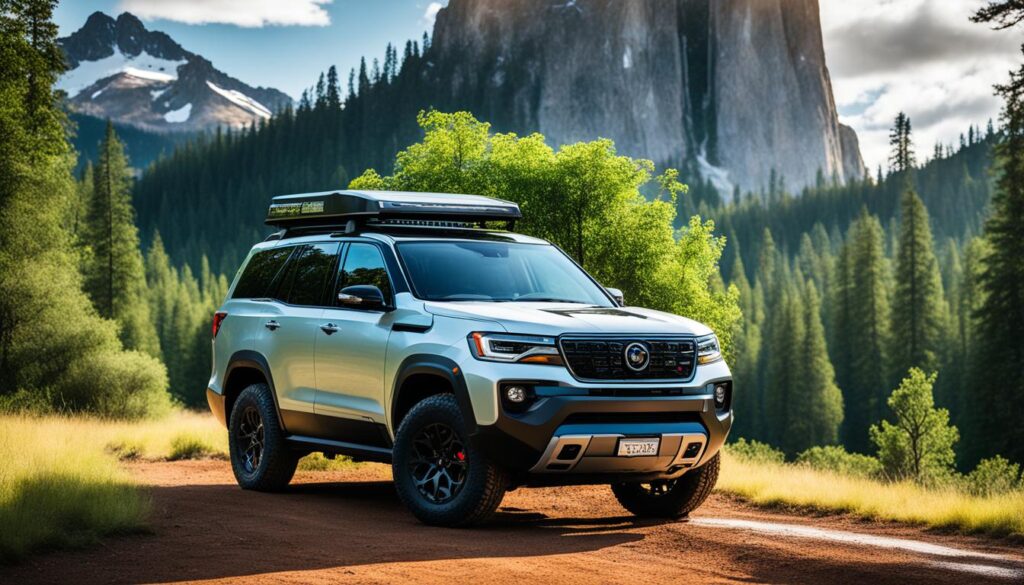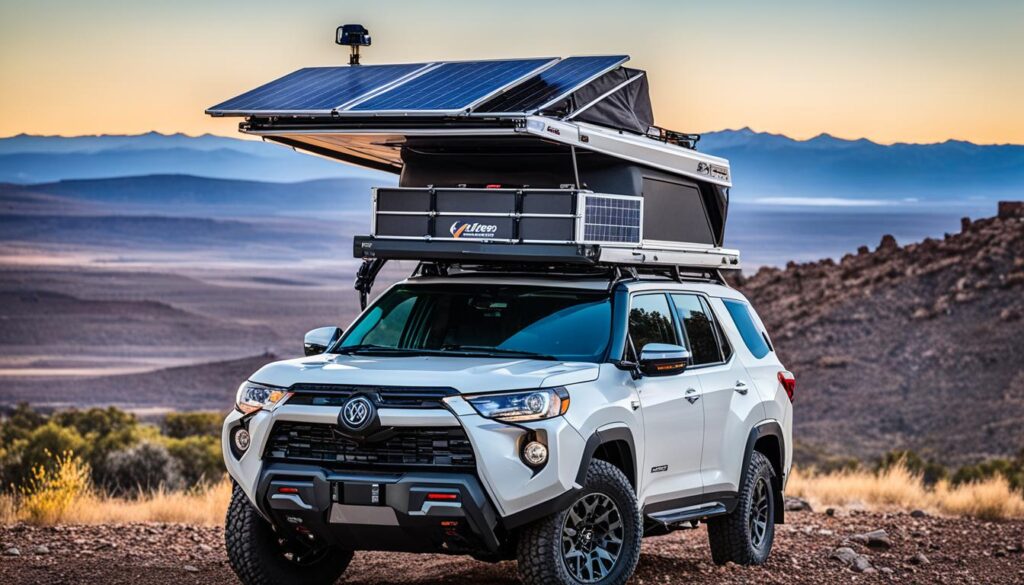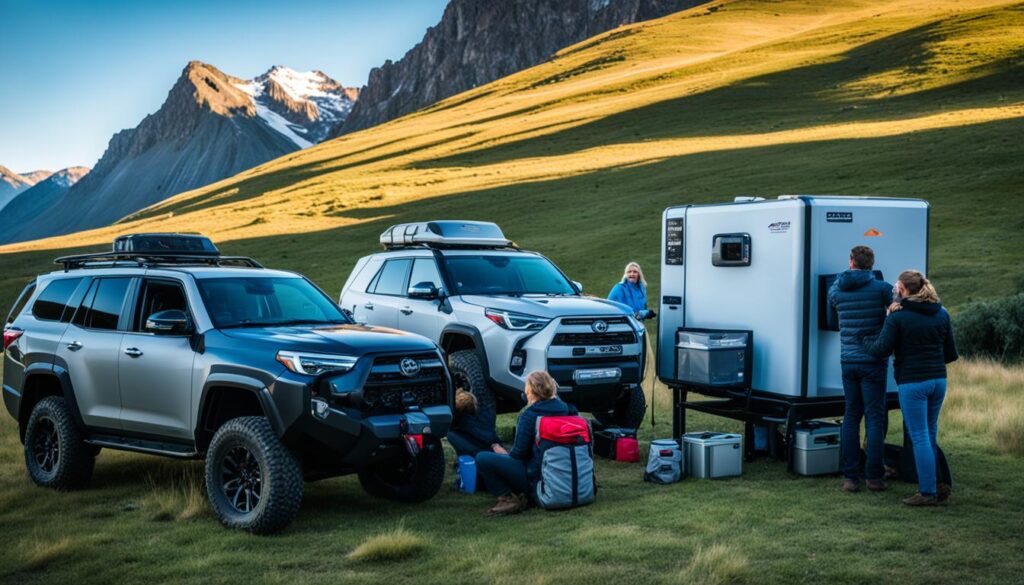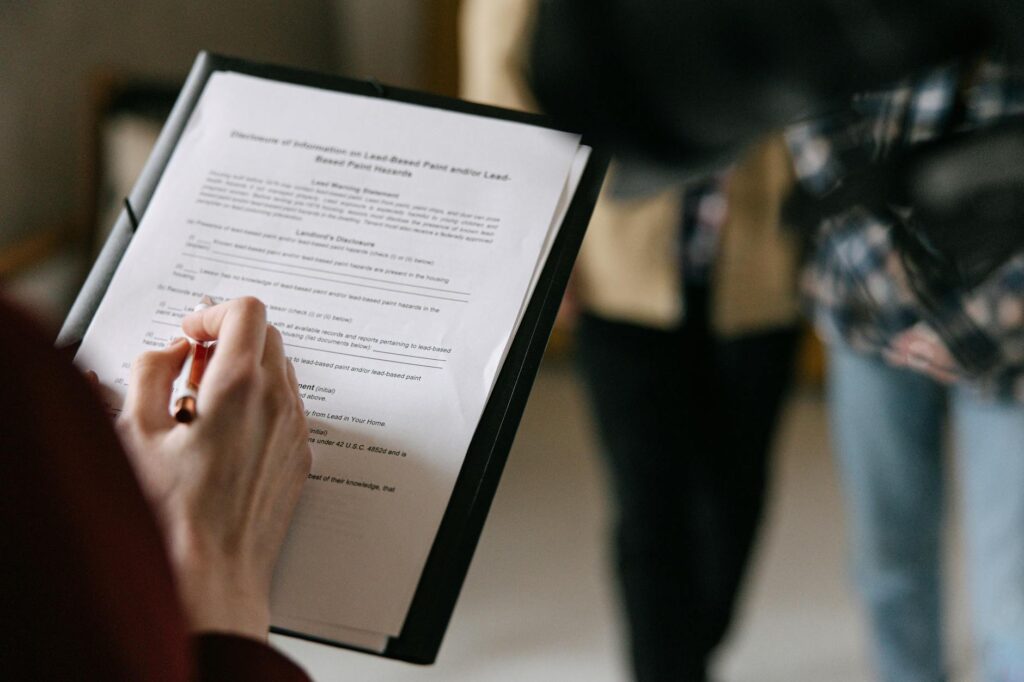Are you planning an epic overlanding adventure? One of the most crucial decisions you’ll have to make is choosing the right size fridge to keep your food and drinks fresh on the road. But what is the best size fridge for overlanding? Is bigger always better, or is there an ideal size that strikes the perfect balance?
In this article, I’ll explore the factors to consider when selecting the size for your overlanding fridge and provide you with some top picks that are guaranteed to keep your essentials chilled and ready to enjoy. So, whether you’re embarking on a weekend getaway or a longer expedition, let’s dive in and find the perfect fridge size that will make your overlanding experience unforgettable.
Key Takeaways:
- Choosing the right size fridge for overlanding is crucial for maintaining the freshness of your food and drinks during your adventure.
- An ideal fridge size for overlanding is typically around 35-40 liters, providing enough space for the average overlanding trip. However, different factors may influence your decision.
- Dometic CFX3 35 Powered Cooler is one of the top picks for overlanding fridges, offering a generous 36-liter storage capacity and powerful cooling technology.
- When choosing a fridge size, consider factors such as the number of people you need to feed, the types of food you will be bringing, and the available space in your vehicle.
- Powering your overlanding fridge is essential, and most fridges use 12V power. It’s important to consider the amperage usage and energy-saving features of your chosen fridge.
When it comes to overlanding, choosing the right size fridge is essential to ensure you have enough space for your food and drinks on the road. To make an informed decision, there are several factors you should consider.
1. Number of People:
The first consideration is the number of people you will be traveling with. More people typically require more food and drinks, so you need a fridge size that can accommodate everyone’s needs.
2. Trip Duration:
Think about how long your overlanding trip will be. If you’re planning a weekend getaway, a smaller fridge may suffice. However, for longer trips or extended stays in remote locations, you’ll need a larger fridge to store enough supplies.
3. Food Storage Needs:
Determine the types of food you’ll be bringing on your overlanding adventure. If you mostly have canned food and non-perishable items, a smaller fridge may work. However, if your meals consist of fresh produce, meats, and beverages that require refrigeration, you’ll need a larger fridge with more space.
4. Vehicle Storage Space:
Measure the storage space available in your vehicle to determine the maximum fridge size that will fit comfortably. Consider not only the width and depth but also the height, as fridges with larger capacities tend to be taller. It’s important to ensure that the fridge can be securely stored and easily accessed during your trips.
| Fridge Size (Liters) | Estimated Storage Capacity | Suggested Overlanding Fits |
|---|---|---|
| 35-40 | Enough space for food and drinks for the average overlanding trip, approximately 1 week’s worth. | Fits in most overland vehicles and provides ample storage for essentials. |
| 50 | Additional space for extended trips or if you need more storage for perishable items. | Ideal for longer adventures or a larger group of travelers. |
Based on the factors above, it is generally recommended to choose a fridge with a capacity of 40-50 liters. This size provides adequate space for about a week’s worth of food and can fit in most overland rigs. However, your specific needs may vary, so carefully evaluate these factors before making a decision.
Powering Your Overlanding Fridge
When it comes to overlanding, having a reliable power source for your fridge is essential. Overland fridges typically operate on 12V power, so it’s important to ensure that you have a power outlet readily available in your rig. This will allow you to keep your food and drinks fresh throughout your outdoor adventures.
One of the best portable fridges for overlanding is the Dometic CFX3 35 Powered Cooler. With its advanced features and durable construction, it’s a top choice for many overlanders. The CFX3 35 is equipped with a 3-stage dynamic battery protection system, preventing the risk of a dead car battery and allowing for deep draw on dual batteries. This ensures that you can power your fridge without worrying about draining your vehicle’s battery.
It’s important to consider the amperage usage of your fridge as well. During compressor use, the amperage can range from 1 to 4 amps, depending on the specific model. Taking into account the power consumption of your fridge will help you plan your energy needs and ensure that you have enough power supply for your overlanding adventures.
External factors such as hot temperatures, frequent opening and closing of the fridge, and the position of the fridge in your vehicle can also impact energy usage. It’s recommended to keep your overlanding fridge in a well-ventilated area and avoid exposing it to direct sunlight or extreme heat. This will help optimize its performance and reduce energy consumption.

Factors That Affect Fridge Performance
When it comes to overlanding fridges, several factors can significantly impact their performance. Understanding these factors will help you choose the best fridge size for your overlanding adventures. Here are some key considerations:
Construction and Cooling Ability
The construction of the fridge, including its insulation and compressor efficiency, plays a crucial role in its cooling ability. Well-insulated fridges with efficient compressors can maintain lower temperatures for longer periods, ensuring optimal food preservation during your overlanding trips.
Weight-to-Space Ratio
Another important factor to consider when selecting an overlanding fridge is the weight-to-space ratio. A heavier fridge may have less interior volume for food storage, which can be a limitation during longer journeys. It’s crucial to strike a balance between capacity and weight to ensure you have enough space for your essentials without compromising the overall weight of your rig.
Material and Durability
The choice of material for your overlanding fridge can impact its durability and suitability for your specific needs. Common materials include fiberglass, steel, and plastic. Fiberglass fridges are lightweight and resistant to external impacts, while steel fridges offer superior ruggedness and durability. Plastic fridges, on the other hand, provide a balance between weight and durability.
Consistent Cooling with Compressor-Driven Units
One significant advantage of compressor-driven overlanding fridges is their ability to provide consistent cooling regardless of external temperatures. Compressor units are capable of maintaining a stable internal temperature, ensuring your food and drinks stay fresh and cool, even in hot weather conditions.
To summarize, when choosing an overlanding fridge, consider factors such as construction, weight-to-space ratio, and material to ensure optimal performance on your adventures. Additionally, opt for a compressor-driven unit to enjoy consistent cooling capabilities in any environment.
| Factors | Impact on Fridge Performance |
|---|---|
| Construction and Cooling Ability | Efficient insulation and compressor ensure optimal cooling |
| Weight-to-Space Ratio | Consider capacity and weight to optimize storage and mobility |
| Material and Durability | Choose the right material for durability and specific needs |
| Consistent Cooling with Compressor-Driven Units | Maintains stable internal temperature regardless of external conditions |
Review of Top Overlanding Gear
When it comes to overlanding, having the right gear is essential for a successful and enjoyable adventure. Here are some top picks for overlanding gear that will enhance your experience:
Truma 44l Fridge
The Truma 44l fridge is an excellent choice for overlanding. It offers a robust construction, ensuring durability and longevity even in rugged terrain. With its optimal size, it fits perfectly in most overland rigs, providing ample space for storing food and beverages during your trip.
The Truma 44l fridge also comes with Bluetooth app control, allowing you to monitor and adjust the temperature remotely. Additionally, it features useful additional features like a built-in bottle opener and a 3A USB port and charger for conveniently charging your devices.
iKamper Sleeping Bag
For those chilly nights in the backcountry, the iKamper sleeping bag is a must-have. It is well-made and provides excellent insulation, keeping you warm and comfortable throughout the night. Whether you’re camping in cold climates or high altitudes, this sleeping bag is designed to keep you cozy.
Pelican Cases
Protecting your camera gear is crucial during overlanding trips, and Pelican Cases are the go-to solution. These cases offer sturdy and waterproof storage, ensuring that your equipment remains safe and undamaged even in challenging environments. With their customizable foam inserts, you can securely organize and transport your gear with ease.
MSR Pocket Rocket Stove
The MSR Pocket Rocket Stove is a lightweight and efficient cooking solution for your overlanding adventures. It is compact and easy to carry, making it ideal for quick cooking needs on the go. Whether you’re boiling water for coffee or preparing a simple meal, this stove will get the job done quickly and efficiently.
Planetary Design Basecamp French Press
For coffee lovers, the Planetary Design Basecamp French Press is a must-have for outdoor brewing. This robust coffee maker is designed to withstand the demands of an overlanding trip. It features double-wall vacuum insulation, keeping your coffee hot for hours. Say goodbye to instant coffee and enjoy a delicious cup of freshly brewed coffee wherever your overlanding adventures take you.

Summary
Having the right gear can greatly enhance your overlanding experience. The Truma 44l fridge provides optimal size and additional features that make it a top pick for overland rigs. The iKamper sleeping bag ensures warmth and comfort during cold nights in the backcountry. Pelican Cases offer reliable protection for your camera gear, while the MSR Pocket Rocket Stove and Planetary Design Basecamp French Press provide efficient solutions for cooking and brewing. Invest in these top overlanding gear items to make the most of your adventures.
Pros and Cons of Top Overlanding Gear
As an overlanding enthusiast, I understand the importance of having reliable gear that can withstand the rigors of outdoor adventures. In this section, I will discuss the pros and cons of some of the top overlanding gear available on the market. From fridges to sleeping bags, camera cases to stoves, I’ll give you an honest assessment to help you make informed decisions for your next overlanding trip.
The Truma 44l Fridge
The Truma 44l fridge is known for its robust construction and quality. It offers ample storage space to keep your food and drinks cool during your overlanding adventures. However, it’s important to note that this fridge is a single-zone unit, which means you won’t be able to separately control the temperature of the fridge and freezer compartments. While this may not be an issue for most users, those who require precise temperature control may find this limitation inconvenient.
The iKamper Sleeping Bag
The iKamper sleeping bag is designed to provide warmth and comfort during your outdoor excursions. Its high-quality materials ensure durability and insulation from the cold. However, it’s worth noting that this sleeping bag is relatively heavy compared to other options on the market. While it may be suitable for car camping or shorter trips, backpackers and lightweight enthusiasts may prefer a lighter alternative.
The Pelican Cases
Pelican Cases are renowned for their excellent protection for camera gear and other valuable equipment. These durable and waterproof cases ensure that your items stay safe and secure during your overlanding trips. However, it’s important to consider that these cases are visually striking and can draw attention to expensive equipment. While their protective capabilities are unmatched, it’s essential to exercise caution and be mindful of the potential attraction to thieves.
The MSR Pocket Rocket Stove
The MSR Pocket Rocket Stove is a popular choice among outdoor enthusiasts due to its ultra-lightweight design and fuel efficiency. It’s perfect for quick cooking needs, such as boiling water for hot drinks or preparing simple meals. However, its compact size and lightweight construction mean that it may not be suitable for extensive cooking needs or larger groups. If you’re planning elaborate camping meals or cooking for a large number of people, you may need to consider a more substantial cooking setup.
The Planetary Design Basecamp French Press
For coffee lovers, the Planetary Design Basecamp French Press offers a robust coffee brewing option for outdoor adventures. Its durable construction ensures it can withstand the demands of overlanding, and it retains heat well, allowing you to enjoy a hot cup of coffee whenever and wherever you choose. However, it’s essential to note that some users have reported challenges when fully closing and aligning the top with the spout. While this does not affect the brewing process, it can be a minor inconvenience when pouring your coffee.
Informed decisions for your overlanding adventures: Pro tip – Consider the specific features and limitations of each gear item to find what best suits your needs.
Now that we’ve examined the pros and cons of these top overlanding gear items, you can make more informed choices for your upcoming trips. Remember, every adventurer has unique preferences and requirements, so it’s essential to consider factors such as overlanding refrigerator size, the best portable fridge for overlanding, and the ideal fridge size for overlanding when selecting your gear. Stay tuned for the next section, where I’ll provide a comprehensive review of more top gear options.
| Overlanding Gear | Pros | Cons |
|---|---|---|
| Truma 44l Fridge | Robust construction and quality | Single-zone fridge may not suit everyone |
| iKamper Sleeping Bag | Warmth and comfort | Relatively heavy for backpacking |
| Pelican Cases | Excellent protection for camera gear | May attract attention to valuable equipment |
| MSR Pocket Rocket Stove | Ultra-lightweight and fuel efficient | Not suitable for extensive cooking needs |
| Planetary Design Basecamp French Press | Durable and retains heat well | Challenging to fully close and align the top with the spout |
Conclusion
When it comes to selecting the best size fridge for your overlanding adventures, it’s crucial to consider your specific requirements and preferences. Whether you’re embarking on a weekend trip or a longer expedition, choosing the right fridge size can greatly enhance your overall experience.
For the average overlanding trip, a fridge with a capacity of 35-40 liters is generally the optimal choice. This size offers ample space to store essential food and drinks while maintaining a compact footprint in your vehicle.
However, if you’re planning an extended journey or traveling with a larger group, opting for a 50-liter fridge may be more practical. This larger capacity ensures you have enough room to accommodate additional supplies and provisions.
Take into account factors such as the number of people you need to feed, the types of food you’ll be carrying, and the available space in your vehicle. Don’t forget to explore top picks like the Dometic CFX3 35 Powered Cooler, which boasts a generous 36-liter storage capacity and advanced VMSO3 compressor cooling technology.
FAQ
What is the best size fridge for overlanding?
The best size fridge for overlanding is typically around 35-40 liters, providing enough space for food and drinks for the average overlanding trip. However, if you are going on an extended trip or traveling to remote locations, a 50 liter fridge may be a better choice for additional space.
What factors should I consider when choosing a fridge size for overlanding?
When choosing the best size fridge for overlanding, consider the number of people you need to feed, the types of food you will be bringing, and the available space in your vehicle. It’s recommended to choose a fridge with a capacity of 40-50 liters, as this provides enough space for about a week’s worth of food and can fit in most overland rigs.
How do I power my overlanding fridge?
Overland fridges typically use 12V power, so make sure you have a power outlet readily available in your rig. Consider the amperage usage of your fridge, which can range from 1-4 amps during compressor use. It’s also important to note that external factors like hot temperatures, opening and closing the fridge, and the position of the fridge in your vehicle can affect energy usage.
What factors can affect the performance of an overlanding fridge?
The construction of the fridge, including its insulation and compressor efficiency, can impact cooling ability. The weight-to-space ratio is also important, as a heavier fridge may have less interior volume for food storage. Additionally, consider the material the fridge is made of and choose one that suits your overlanding style. Compressor-driven units provide consistent cooling regardless of external temperatures.
What are some top overlanding gear recommendations?
Some top overlanding gear recommendations include the Truma 44l fridge for its robust construction and optimal size for most overland rigs, the iKamper sleeping bag for warmth and comfort, Pelican Cases for their sturdy and waterproof storage for camera gear, the MSR Pocket Rocket Stove for its lightweight and efficient cooking capabilities, and the Planetary Design Basecamp French Press for a robust coffee brewing option.
What are the pros and cons of the top overlanding gear?
The Truma 44l fridge offers robust construction and quality, but it is a single-zone fridge and may not be suitable for everyone. The iKamper sleeping bag provides warmth and comfort, but it is more suitable for car camping due to its weight. The Pelican Cases offer excellent protection for camera gear but may highlight expensive equipment to potential thieves. The MSR Pocket Rocket Stove is ultra-light and efficient but may not be suitable for extensive cooking needs. The Planetary Design Basecamp French Press is durable and retains heat well, but it can be challenging to fully close and align the top with the spout.
What is the ideal size for an overlanding fridge?
The ideal size for an overlanding fridge is generally around 35-40 liters, as this provides enough space for food and drinks for the average overlanding trip. If you have a larger group or are going on an extended trip, a 50 liter fridge may be more suitable. Consider your specific needs and preferences when choosing the size of your overlanding fridge.






